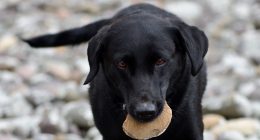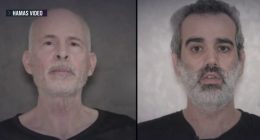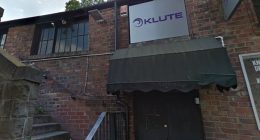
BAD CITY: Peril and Power in the City of Angels, by Paul Pringle
“Bad City,” by Paul Pringle, begins in Pasadena, Calif., in March 2016, with the kind of tip that reporters prize: An unconscious young woman. A drug-paraphernalia-strewn hotel room. An older male companion, reluctant to call for help, who turns out to be the dean of the University of Southern California’s prestigious Keck School of Medicine.
Pringle, an investigative reporter at The Los Angeles Times, believed that he could quickly push out a story about one more powerful man behaving badly, the bread-and-butter work of someone who keeps tabs on the city’s most influential people for a living.
In fact, the hotel episode led to a series of facts that were much darker than Pringle could have imagined. It sucked him into a 16-month-long reporting saga that eventually produced an L.A. noir-style story of exploitation, depravity and greed. It also resulted in the ouster of the newspaper’s editor and publisher, with whom Pringle went to war over the boss’s coziness with U.S.C. and its top officials.
Pringle’s fast-paced book is a master class in investigative journalism, explaining how a reporter wrestles information and documents from reluctant sources and government officials. It is a stark look at the weakening of local news, especially at The Los Angeles Times. Sam Zell, a notorious vulture investor, had acquired the newspaper’s parent company in 2007, and mortgaged away its own employees’ pensions, leaving the company in financial ruin in 2008, before the biotech billionaire Patrick Soon-Shiong purchased the flailing paper in 2018. “Bad City” is a compelling version of this narrative that one can rip through in a few long afternoons at the beach.
But Pringle doesn’t let the reader linger on the salacious details without considering the many ways that unchecked power fosters depravity and corruption, a shopworn idea that seems to have fresh relevance in 2022, when abuse of authority is on the rise and checks on that abuse seem ever less likely to win out.
Many of the events that Pringle chronicles are already known to readers who follow his work. His articles became national news that deeply impacted U.S.C. They remain enraging five years on.
After being stonewalled by law enforcement and U.S.C.’s top officials, Pringle and his colleagues managed to gather on-the-record interviews, police records and video evidence that told the abhorrent story of Carmen A. Puliafito, the dean of the Keck School of Medicine, who was seen on videos using crystal methamphetamine, heroin and Ecstasy with a group of young companions unaffiliated with the university. Additional detail in the book makes clear that Puliafito used drugs and money to control them, and to keep a young woman named Sarah Warren enslaved to his sexual needs.
The Puliafito story, which The Los Angeles Times published in July 2017, eventually led the reporters to discover more male employees who either crossed ethical lines or committed crimes that the university then covered up. This included a gynecologist in the student health center who preyed upon young women, and disproportionately Asian women, for decades, photographing their genitals and sexually assaulting them, sometimes in a filthy exam room that reeked of his body odor.
Uncovering wrongdoing and forcing corrupt systems to change is the kind of impact that makes journalism essential to a working democracy. It is how the fourth estate maintains its clout over the venerable, better-funded institutions that it covers. And it is what editors typically want their reporters to do, particularly if they are covering people in power.
But behind the scenes, Pringle claims, he and his colleagues reported and wrote the Puliafito story in defiance of Davan Maharaj, the newspaper’s publisher and editor, and Marc Duvoisin, its managing editor.
U.S.C. is one of the newspaper’s top business partners, the kind of moneyed advertiser that publishers typically court. Pringle believes that it was inappropriate for Maharaj, “the ultimate point person for the paper’s business dealings with U.S.C.,” to have a hand in the Puliafito story, given the conflict of interest. And he accused the top two editors of back-channeling with U.S.C. officials, taking reporters off the story and using draconian edits to delay publication of the piece for several months. Some of these moves have effectively shielded the school from criticism.
Maharaj and Duvoisin denied those accusations after the initial Puliafito story ran, and in the book they dispute some of them again.
Pringle and his fellow reporters — Harriet Ryan, Adam Elmahrek, Matt Hamilton and Sarah Parvini — were left to secretly hunt down the facts that would become one of the largest university scandals of this century, careful not to be seen together in the office or to tell their bosses what they were doing. They got more help from Puliafito’s drug-addicted victims and their family members than from the police officers, school officials and editors whose job it was to stop him.
An irate Pringle recounts his fears about Maharaj’s admiration for Max Nikias, the long-rubber-stamped U.S.C. president whose own misconduct would lead to his departure in 2018, and the audacious edits the paper made to water down the story. Early on in the process, Duvoisin would not let Pringle call the article a “Times investigation,” because, Duvoisin said, “it implies wrongdoing.”
When Pringle shared his concerns with colleagues, Times-affiliated lawyers and eventually the head of human resources, he helped spark an internal investigation into Maharaj and Duvoisin’s handling of the Puliafito story. Though the official findings determined neither editor commited wrongdoing, a month after the story ran, both were pushed out.
Despite his fight with Maharaj and Duvoisin, despite the still tenuous financial position of the newspaper and the might of U.S.C. — thanks to the fund-raising prowess of men like Puliafito — Pringle believes that reporters and their sources, lowly as they are, can outmaneuver even the most powerful people and institutions and bring them to heel. And when those institutions collude to protect one another, reporting may be our last best hope for accountability.
Pringle delivers his account in a torrent of sharp storytelling and righteous score-settling that might seem petty if the stakes were not so grave.
By 2016, The Los Angeles Times was a husk of its former self, thanks to Zell. As the newspaper cut staff through buyouts and layoffs, the university offered financial support to the publisher’s office in the form of advertising, and to the newsroom in the form of jobs.
“The Times’s power had always flowed principally from the robustness and incorruptibility of its journalism. Its power came from being a check on power,” Pringle writes. “It was that power that I was convinced Maharaj and his enablers had surrendered to a rising and emboldened U.S.C.”
There were terrible consequences when U.S.C. had the upper hand.
During the months that Pringle and his colleagues fought for permission to publish the Puliafito story, the doctor continued to supply drugs to Warren and others. He introduced Warren’s teenage brother to meth, and fostered an addiction that made school and work impossible. And Puliafito’s “No. 2 girl,” a nude model named Dora Yoder who also provided him with sex in order to feed her drug addiction, had a baby who died in October 2017, just 25 days old, with meth in his body.
When the institutions that are supposed to protect people — like Warren, her family and her peers, like university students and health care patients and the people of Los Angeles — abdicate their responsibilities to the public trust, it’s too often the public who has to pay.
BAD CITY: Peril and Power in the City of Angels, by Paul Pringle | 289 pp. | Celadon | $29.99.
Source: | This article originally belongs to Nytimes.com









